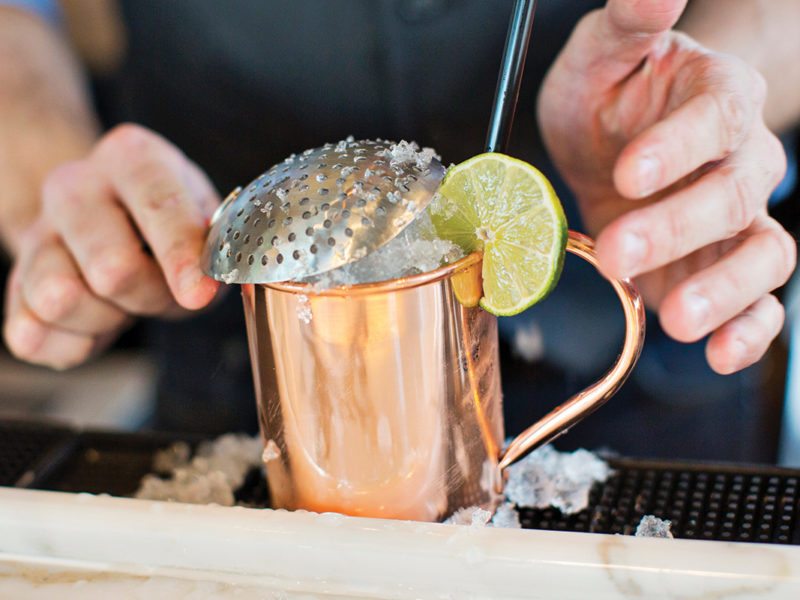
by Amy Paturel
The word “mule” doesn’t immediately conjure images of cocktails, but its liquid namesake is the “it” libation of late. Legend has it the mule originated in the 1940s when two entrepreneurs, commiserating over drinks because their companies were failing, mixed a new concoction: vodka, ginger beer, crushed ice and a squeeze of lime. To add cachet, they poured the drink into a copper mug and voila! The Moscow mule was born.
One of the men worked with Smirnoff and started taking photos of bartenders holding a bottle of Smirnoff in one hand and a copper mug in the other – hence the “Moscow” part of the name.
Mules, like other craft cocktails, fell out of favor during the ‘90s when mixologists started creating complex drinks with esoteric names, using a dozen or more ingredients. But the potion made a comeback around 2006 when people began moving away from the sweeter, fruitier side of vodka cocktails and getting back to the classics. Instead of syrupy sweet martinis, they wanted more balanced vodka drinks.
Mules are the ideal antidote, offering flavor, spice and a hint of sweetness along with vodka, perhaps the most approachable spirit. In recent years, some mixologists claim mules have become among the most requested cocktails in bars across the country.
With only four key ingredients — vodka, ginger beer, crushed ice and lime — the mule stands out in its simplicity. But that means the drink is only as good as those ingredients, and what separates a top-notch mule from a mediocre one is the ginger beer. Too much or too little spice can wreck the drink’s balance. In fact, some bars known for their mules brew or mix their own ginger beer to ensure a big punch of flavor. Making ginger beer fresh daily keeps the aromatics sharp. If you’re mixing your mule with store-bought beer – as most of us would – a four- or five-to-one ratio (one vodka, five ginger beer) should be tasty.
But don’t be afraid to experiment. Try adding seasonal elements such as Pimm’s liqueur in summer or darker liquors and bitters in winter. You could replace the vodka with gin, whiskey, bourbon or even tequila. Or bump up the sugar, add cinnamon bitters – whatever you think will add flavor.
Of course, swapping vodka for another spirit means the “mule” moniker no longer stands. A Kentucky buck is ginger beer and bourbon, a Dark and Stormy is ginger beer and rum and a Ginger Rogers is ginger beer and gin. With traditional vodka though, the mule is one of the most approachable craft cocktails invented – it’s easy to drink and leaves you wanting more.
Hammered copper mugs can be pricey, but they do have that “cool” factor. Shop around; you can find a set of four online for $30 or less.
Basic Moscow Mule
1.5 oz Vodka
1/4 oz rich simple syrup (recipe below)
3/4 oz lime juice
2 oz ginger beer
To make simple syrup, combine 2 parts sugar to 1 part water in a small saucepan and heat on medium until sugar dissolves. Add vodka, lime and rich simple syrup to a Moscow Mule mug. Stir briefly to integrate components. Add crushed ice and fill with ginger beer. Stir again to integrate, and top with more crushed ice. Garnish with a thickly cut lime wheel.
Photo by Paul Taylor.

